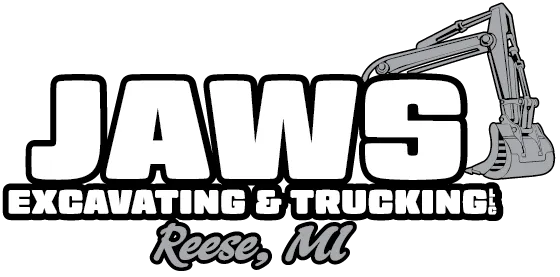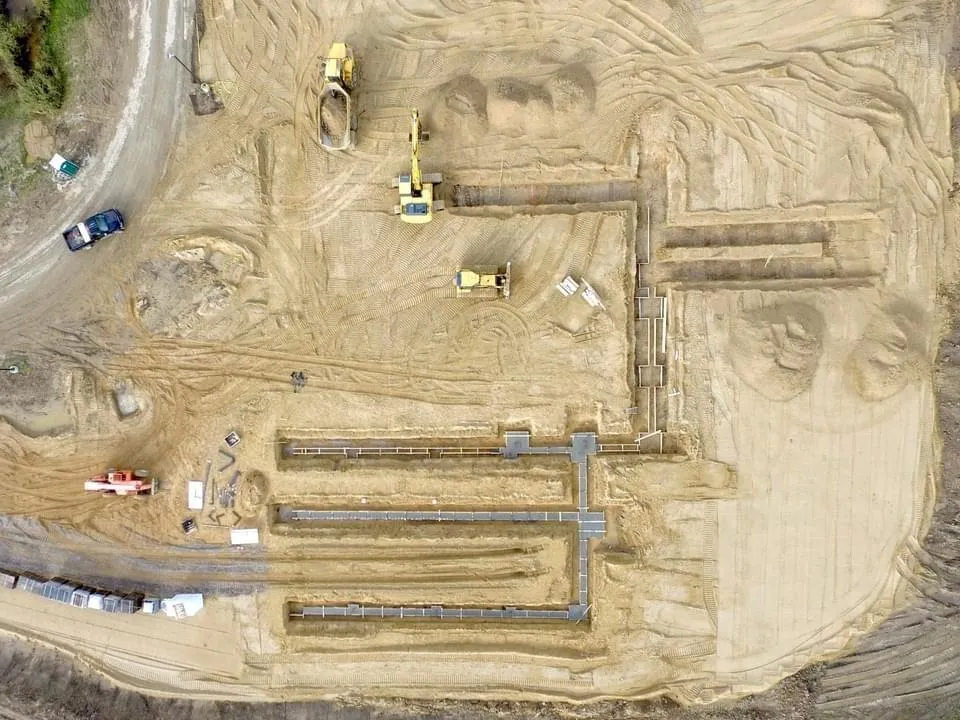
Pond Digging Service
Why Choose JAWS Excavating & Trucking, LLC for your pond digging needs?
With nearly a decade of pond excavation experience, JAWS Excavating & Trucking, LLC is one of Michigan's top pond digging contractors.
When you hire JAWS, you know you're getting the best. Unmatched integrity and your satisfaction is always guaranteed. We know our success depends on our clients' satisfaction.
If you're ready for an estimate or just have a few questions, give us a call.
We're excited to help you finish your pond digging project!
How Long Does It Take To Dig A Pond?
The time it takes to build a pond can vary greatly in terms of days. Generally, it is a 1 day to 2 week process with the average sized pond being 4 days*.
The number of days depends on the size and complexity as well as any potential delays or difficulties.
What's The Fastest Way To Dig A Pond?
When it comes to digging a pond quickly and effectively, hiring a professional is your best bet. Many people underestimate the complexity of pond excavation and attempt to do it themselves, only to encounter challenges that often require expert intervention to resolve.
Key Points to Consider:
Expertise Matters: Professional pond builders bring years of experience and specialized equipment to the job, ensuring efficient and precise excavation.
Avoiding Common Pitfalls: DIY attempts can lead to delays, additional costs, and suboptimal results due to lack of equipment and expertise.
Speed and Efficiency: Professionals streamline the process, often completing the job in a fraction of the time it would take an inexperienced individual.
Why Choose Professional Pond Builders?
Specialized Equipment: They have access to excavators, compactors, and other machinery designed for pond construction, speeding up the digging process.
Knowledge and Skill: Experienced contractors understand soil conditions, water table dynamics, and regulatory requirements, ensuring the pond is built correctly the first time.
Peace of Mind: Hiring professionals means your project is handled efficiently from start to finish, with minimal disruption and maximum satisfaction.
How Do I Figure Out How Deep My Water Table Is?
The most reliable method of obtaining the depth to the water table at any given time is to measure the water level in a shallow well with a tape. If no wells are available, surface geophysical methods can sometimes be used, depending on surface accessibility for placing electric or acoustic probes.
Determining the depth of your water table is crucial for planning and constructing a pond that maintains water levels effectively.
Here are the recommended methods:
Using a Shallow Well Measurement:
The most reliable method to assess the water table depth is by measuring the water level in a shallow well using a tape measure. This direct approach provides accurate data on the current water table depth.
Alternative Surface Geophysical Methods:
If no wells are accessible, surface geophysical methods can be employed. These methods involve using electric or acoustic probes to estimate the water table depth based on surface accessibility and soil conditions.
Key Considerations:
Accuracy and Reliability: Shallow well measurements offer precise data, whereas surface geophysical methods depend on the site's conditions and accessibility.
Professional Assistance: For complex terrain or inaccessible areas, consulting with geophysical experts can ensure accurate measurements and informed decisions.
Importance of Water Table Depth:
Understanding the water table depth helps in designing the pond's depth, choosing suitable liners, and planning drainage systems to maintain optimal water levels.
Common Pond Construction Blunders
Avoiding common pitfalls in pond construction is crucial to ensuring a successful project that enhances your property's value and aesthetic appeal. Here are some frequent mistakes to watch out for:
1. Poor Location Selection
Choosing the right location is paramount. Factors such as sunlight exposure, soil quality, and proximity to trees or structures can impact the pond's ecosystem and longevity.
2. Underestimating Labor Requirements
Pond excavation and construction require skilled labor and sufficient manpower. Underestimating labor needs can lead to delays, increased costs, and compromised quality.
3. Inadequate Depth
Failing to dig deep enough can result in insufficient water volume and poor habitat conditions for aquatic life. It's essential to plan for adequate depth based on intended use and ecosystem requirements.
4. Size Matters: Pond Too Small
A pond that's too small may not support desired aquatic life or provide adequate water circulation. Proper sizing is crucial for ecosystem balance and visual appeal.
5. Steep Sides and Lack of Ledging
Steep pond sides can pose safety hazards and limit plant growth opportunities. Incorporating ledges and gradual slopes promotes biodiversity and aesthetic value.
6. Improper Use of Stone and Rock
Incorrect placement of stones and rocks can disrupt water flow and aesthetics. Proper positioning enhances structural integrity and natural appeal.
7. Filtration System Inadequacies
Effective filtration is essential for maintaining water clarity and quality. Inadequate filtration can lead to algae growth, stagnant water, and poor ecosystem health.
8. Accessibility Challenges
Limited access for maintenance and emergency situations can hinder pond management efforts. Ensuring adequate access paths is vital for ongoing care and upkeep.
8. Improper Berm Size for waterfalls
Why Should You Build Pond Ledges?
This is right from Pond Construction 101
Pond ledges play a crucial role in enhancing both the aesthetics and functionality of your pond. Here’s why they are essential in pond construction:
Enhancing Aesthetic Appeal:
Pond ledges add visual interest by breaking up the water surface and creating natural contours. They provide opportunities to showcase aquatic plants and enhance the overall beauty of the pond.
Supporting Diverse Plant Life:
Ledges create shelves at different water depths, catering to plants that thrive at varying levels of submersion. This diversity not only enriches the pond ecosystem but also improves water quality by absorbing nutrients and providing habitat for beneficial organisms.
Structural Benefits:
The first pond ledge, typically 6 to 10 inches deep, is strategically placed around the pond perimeter. This design helps to stabilize the pond edges, prevent erosion, and facilitate easier maintenance access.
Practical Considerations:
Plant Placement: Ledges allow for strategic placement of plants like water lilies and marginal plants, which require specific water-depth conditions.
Aesthetic Appeal: They break up the monotony of a flat water surface, creating a more natural and visually appealing environment.
Ecosystem Health: Supporting diverse plant life contributes to balanced nutrient levels and enhances water clarity.














